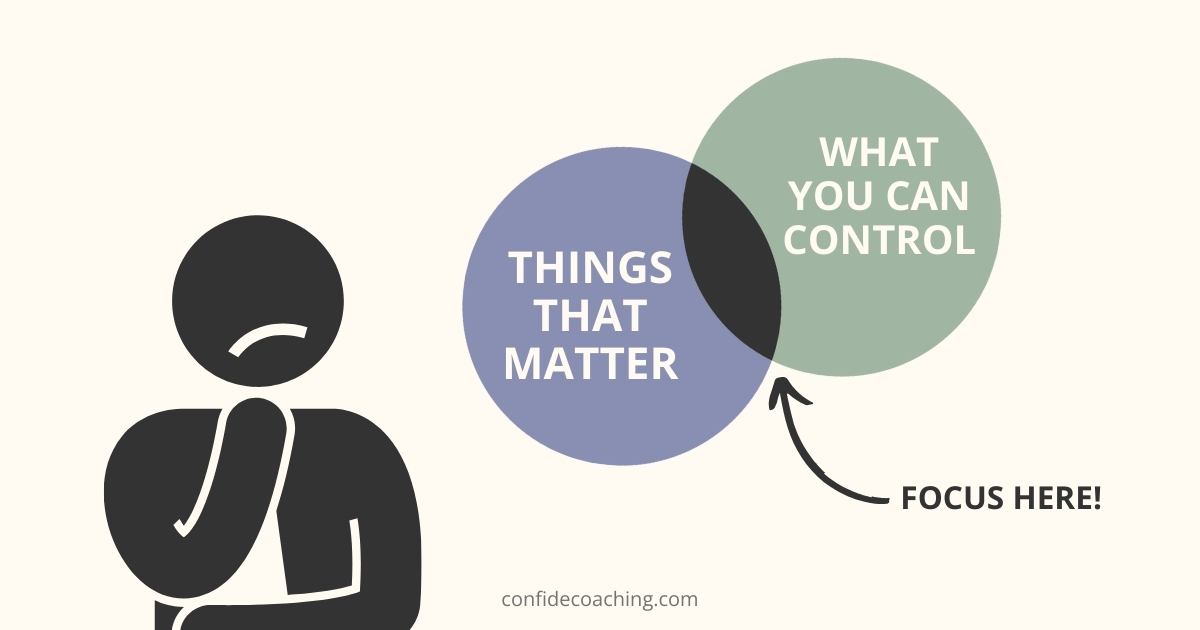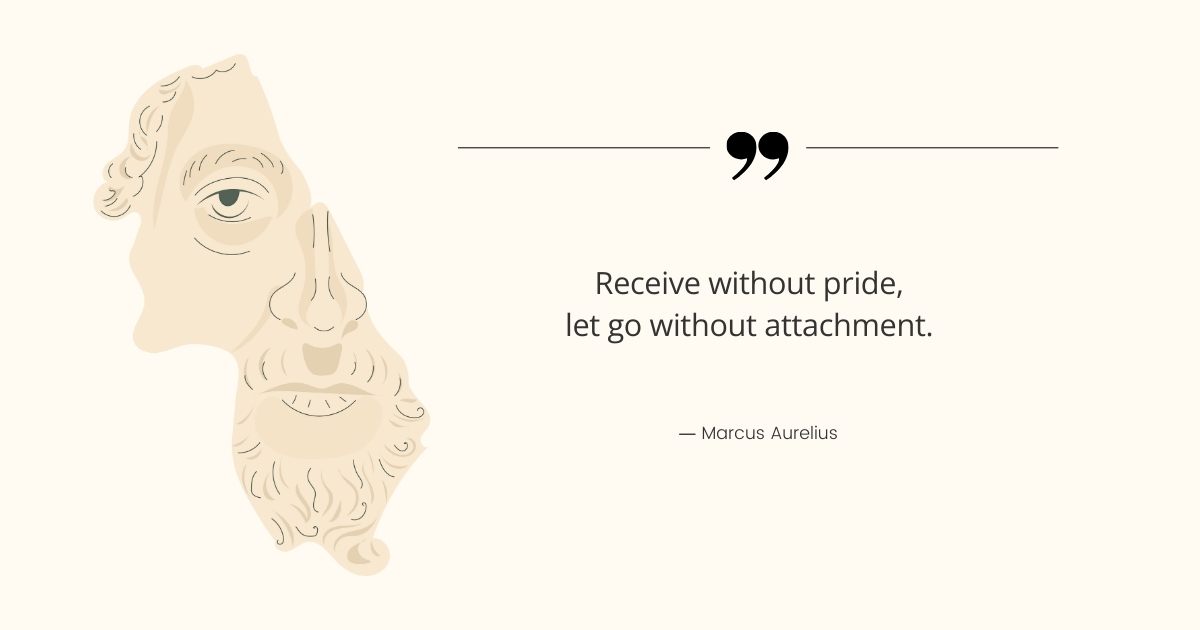
Change is inevitable. From the shifting seasons to life’s unexpected twists, change shapes our experiences and challenges our perceptions. Yet many of us struggle with aspects beyond our control, clinging to the familiar and feeling overwhelmed when life doesn’t align with our expectations. This resistance often leads to stress, anxiety, and a persistent sense of dissatisfaction.
So, how can we navigate change and find peace amidst the chaos? Stoicism, an ancient philosophy, offers profound insights into acceptance. It teaches us to focus on what we can control—our thoughts, actions, and reactions—and let go of everything else. By embracing this mindset, we cultivate resilience, inner peace, and a deeper understanding of ourselves and the world around us.
As autumn unfolds, nature provides a vivid metaphor for letting go. Trees shed their leaves without resistance, trusting in the cycle of seasons and the promise of new growth. This natural process encourages us to release old habits, negative thoughts, and unhelpful behaviors, much like the trees letting go of their leaves.
Understanding Stoic Acceptance
At the heart of Stoicism lies the pursuit of inner tranquility through acceptance of what we cannot control. Epictetus, a former slave turned philosopher, taught that freedom comes from understanding what’s within our control and releasing attachment to everything else. Seneca, a Roman statesman, emphasized rationality and self-discipline as paths to true contentment. Marcus Aurelius, a Roman emperor, reflected on accepting each moment as it comes, highlighting life’s transient nature.
A key concept in Stoicism is the dichotomy of control, which distinguishes between what we can and cannot control. We have control over our own thoughts, beliefs, desires, and actions. External events, other people’s actions, natural phenomena, and fate lie beyond our control. By focusing on what we can control and accepting what we cannot, we reduce unnecessary worry, cultivate inner peace, and enhance personal effectiveness.
Amor Fati, meaning “love of fate,” is a practice that encourages us to embrace all events as necessary and beneficial. It’s about seeing every occurrence, good or bad, as part of our journey. By finding meaning in adversity and letting go of resistance, we can act with intention, develop resilience, and find contentment unburdened by regrets or fears.

Fall: A Season for Letting Go
Autumn symbolizes release and renewal. As temperatures drop and daylight wanes, trees display vibrant colors before shedding their leaves—a necessary act to conserve energy for the winter ahead. This shedding isn’t a sign of loss but a strategic move that sets the stage for new growth in spring.
Just as trees let go of their leaves, we can release burdens that weigh us down—stress, guilt, resentment, or fear. Nature’s cycles teach us about impermanence and growth through decay. Fallen leaves enrich the soil, providing nutrients for future growth. Similarly, letting go of outdated beliefs or habits creates fertile ground for new ideas and behaviors.
By aligning ourselves with these natural rhythms, we find balance and become part of a larger ecosystem where personal growth contributes to collective well-being.
Reflecting on Personal Change
Autumn’s transformative energy makes it an ideal time for introspection. Here are steps to guide your reflection:
1. Set Aside Time for Introspection: Find a quiet space where you can contemplate without distractions.
2. Identify Areas for Release: Consider behaviors hindering your progress or well-being. Are there routines that no longer serve your goals? Reflect on recurring negative thoughts or beliefs and acknowledge patterns causing stress or conflict.
3. Visualize the Process: Imagine yourself releasing these burdens, much like leaves falling gently from a tree. How does it feel to let them go?
4. Set Intentions for Renewal: Decide what you want to cultivate in place of what you’re releasing—positive habits, constructive thoughts, or behaviors aligning with your values.
5. Create a Plan of Action: Outline practical steps to support your intentions. This might include setting specific goals, seeking support, or incorporating new practices into your routine.
6. Practice Gratitude: Reflect on what you’re grateful for during this transitional period. Gratitude enhances well-being and provides a positive foundation for change.
By embracing the present moment and letting go with compassion, you make space for new experiences and growth, much like the promise of spring following winter.

Identifying What You Can’t Control
Recognizing what lies beyond our influence is essential to letting go. Common factors outside our control include other people’s decisions and behaviors, natural events like weather or biological processes, societal changes, and past occurrences. Attempting to control these often leads to frustration and disappointment.
To internalize the dichotomy of control:
- Practice Mindful Awareness: Before reacting, pause and consider whether the situation is within your control.
- Journal Your Thoughts: Write about situations that cause stress and analyze whether they are controllable.
- Create Reminders: Keep lists of what you can and cannot control visible to reinforce acceptance.
Cultivating mindfulness enhances your ability to recognize futile control attempts and gently guides you back to a state of acceptance.
Attempting to control the uncontrollable can lead to stress, anxiety, feelings of helplessness, and strained relationships. By acknowledging and accepting limitations, you empower yourself to live more peacefully, directing energy where it makes a real difference.
Letting Go of Old Habits and Negative Thoughts
Negative habits and thought patterns can act as anchors, preventing us from moving freely through life. Procrastination, self-criticism, expecting the worst, perfectionism, dwelling on the past, negative self-talk, and avoidance behaviors can hinder our well-being.
Stoicism offers practical tools to release these burdens:
- Negative Visualization: Contemplate potential challenges to reduce fear and increase appreciation for what you have.
- Journaling: Enhance self-awareness by writing down thoughts and tracking progress.
- Cognitive Reframing: Change your interpretations of events to alter emotional responses.
- Mindfulness Meditation: Practice present-moment awareness without judgment.
Building new, positive habits is crucial. Set clear, specific goals and start small. Create routines to establish consistency. Stay accountable by tracking your progress and sharing your goals with supportive people. Reward yourself for small victories, and be patient and compassionate with yourself. Remember, building new habits takes time and persistence.

Creating New Opportunities Through Acceptance
Acceptance isn’t about passive resignation; it’s an active process that opens doors to creativity, resilience, and a richer life experience. By embracing reality as it is, you empower yourself to find innovative solutions and build the emotional strength needed to navigate life’s ever-changing landscape.
Acceptance Enhances Creativity:
- Adaptability: Encourages you to adapt to circumstances, prompting creative problem-solving.
- Resourcefulness: Recognizing limitations leads you to explore alternative methods and tools.
For example, if you want to spend more time outdoors but the weather is unfavorable, acceptance can lead you to find creative solutions:
- Engage in quick activities like jumping rope for five minutes in the morning light.
- Take ten-minute brisk walks during breaks in the weather.
- Invest in weather-appropriate clothing to make outdoor time more comfortable.
Acceptance builds resilience by fostering emotional stability and enhancing adaptability. It shifts your focus from problems to potential solutions and strengthens coping mechanisms.
Integrating Stoicism into Daily Life
Mindful Decision-Making involves making choices based on what you can control. Focus on your intentions rather than outcomes, prioritize your values and virtues, and practice detachment from external approval.
In everyday situations:
- If you’re passed over for a promotion, acknowledge that the decision is beyond your control and focus on personal growth.
- When faced with interpersonal conflicts, choose your reaction and communicate calmly.
- If you’re stuck in traffic, control your attitude by choosing patience over frustration.
Building a Supportive Environment is also essential. Surround yourself with people who understand and respect these principles. Remember, “You’re the average of the five people you spend the most time with,” which can include inspirational figures, online mentors, or professionals like therapists or life coaches. Creating healthy boundaries protects your energy and supports your journey.
Conclusion
By embracing Stoic principles and aligning ourselves with nature’s rhythms, we can let go of what we cannot control, shedding old habits and negative thoughts. This process opens the door to personal renewal, inner peace, and a more harmonious existence. As the leaves begin to fall and the world around us transitions, let’s embark on this journey of acceptance, finding profound personal growth and a renewed sense of purpose.
Embracing change isn’t always easy, but by focusing on what we can control and letting go of the rest, we align ourselves with the natural flow of life. The wisdom of Stoicism offers timeless guidance, helping us navigate complexities with clarity and composure. This autumn, as nature models the beauty of release and renewal, may we find the courage to let go and the inspiration to grow.

Paul Strobl, MBA, CPC
Owner of Confide Coaching, LLC
Paul is a Master Life Coach for GenX and GenY executives and business owners. Originally from Houston, Texas, he has been location independent for most of his adult life. He currently resides in the Rhodope Mountains of Bulgaria near the Greek border with his brilliant wife, 14-year-old stepson (officially adopted in 2021!) and a Posavac Hound rescue.

